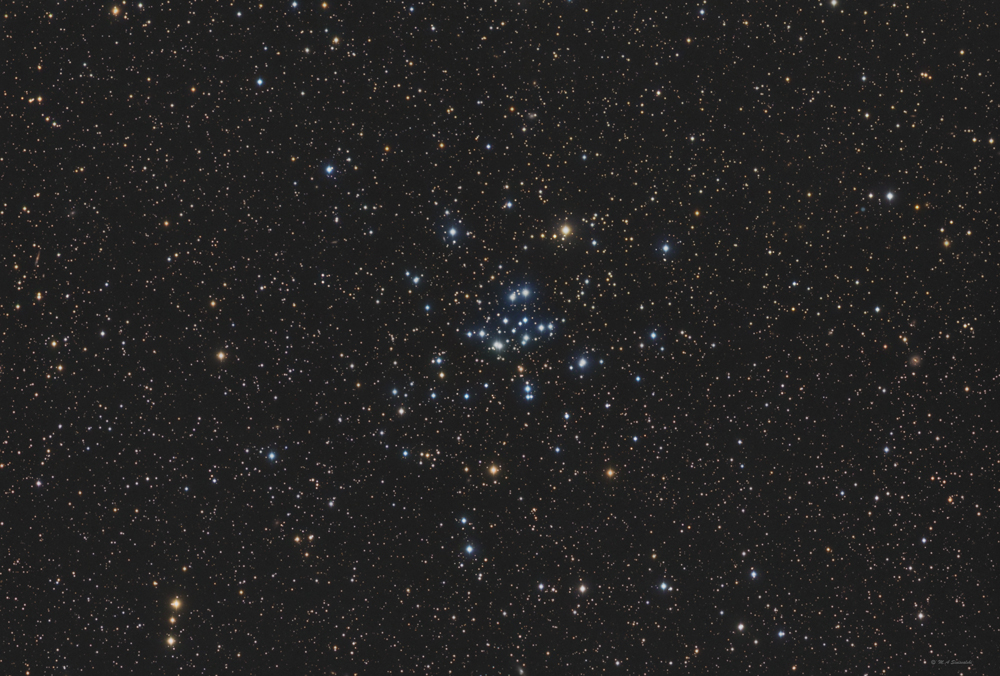© 2022 Michael A. Siniscalchi
Messier 34
Open Cluster in Perseus
RA:02h 42m 05s Dec: +42 46' 42" Distance - ~1500 ly Size- 7 ly
Wikipedia-
Messier 34 (also known as M34 or NGC 1039) is a large and relatively near open cluster in Perseus. It was probably discovered by Giovanni Batista Hodierna before 1654 and included by Charles Messier in his catalog of comet-like objects in 1764. Messier described it as, "A cluster of small stars a little below the parallel of y (Andromedae). In an ordinary telescope of 3 feet one can distinguish the stars."
Based on the distance modulus of 8.38, it is about 470 parsecs (1,500 ly) away. For stars ranging from 0.12 to 1 solar mass, the cluster has about 400. It spans about 35' on the sky which translates to a true radius of 7.5 light years at such distance.The cluster is just visible to the naked eye in very dark conditions, well away from city lights. It is possible to see it in binoculars when light pollution is low.
The age of this cluster lies between the ages of the Pleiades open cluster at 100 million years and the Hyades open cluster at 800 million years. Specifically, comparison between noted stellar spectra and the values predicted by stellar evolutionary models suggest 200–250 million years. This is roughly the age at which stars with half a solar mass enter the main sequence. By comparison, stars like the Sun enter the main sequence after 30 million years.
Click on image for full size
Messier 34 position shown relative to our location (Sun) in the Milky Way Galaxy
Galatic Longitude: 143.7
Galatic Latitude: -15.6
Distance from Galatic Plane:394 ly below the galatic plane
Above image and info provided by Our Galaxy 3D Atlas application and used with permission by
Otherwise

